Related Research Articles
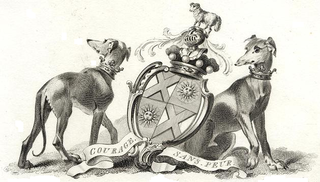
Viscount Gage, of Castle Island in the County of Kerry of the Kingdom of Ireland, is a title in the Peerage of Ireland. It was created in 1720 for Thomas Gage, along with the subsidiary title of Baron Gage, of Castlebar in the County of Mayo, also in the Peerage of Ireland. In 1744 he also succeeded his cousin as eighth Baronet, of Firle Place. The titles remain united. The Gage family descends from John Gage, who was created a baronet, of Firle Place in the County of Sussex, in the Baronetage of England on 26 March 1622. His great-grandson, the seventh Baronet, represented Seaford in Parliament. He was succeeded by his first cousin, Thomas Gage, 1st Viscount Gage, the eighth Baronet. He sat as a Member of Parliament for Minehead and Tewkesbury and also served as Governor of Barbados. In 1720, 24 years before succeeding in the baronetcy, he was raised to the Peerage of Ireland as Baron Gage and Viscount Gage. His second son was the military commander the Hon. Thomas Gage.
Viscount Hawarden is a title in the Peerage of Ireland.
Earl of Sussex is a title that has been created several times in the Peerages of England, Great Britain, and the United Kingdom. The early Earls of Arundel were often also called Earls of Sussex.

There have been three baronetcies created for persons with the surname Booth, one in the Baronetage of England and two in the Baronetage of the United Kingdom. The 1916 creation remains extant, the 1835 creation became extinct in 1896 and the 1611 baronetcy has been dormant since 1797. The senior line of the first creation was elevated to the peerage as Baron Delamer and Earl of Warrington.
This is a list of people who have served as Custos Rotulorum of Somerset.

Baron Berkeley of Stratton, in the County of Cornwall, was a title in the Peerage of England. It was created in 1658 for John Berkeley, 1st Baron Berkeley of Stratton, a Royalist during the Civil War who had distinguished himself at the Battle of Stratton, fought in 1643 at Stratton in Cornwall. He was a member of the Berkeley family of Bruton in Somerset, descended from Sir Maurice de Berkeley, a younger son of Maurice de Berkeley, 2nd Baron Berkeley (1271–1326) of Berkeley Castle in Gloucestershire, the senior line of the Berkeley family. His brother was Charles Berkeley, 2nd Viscount Fitzhardinge and his nephew was Charles Berkeley, 1st Earl of Falmouth. The 1st Baron's second son, the 3rd Baron, was an Admiral in the Royal Navy who died without surviving issue and was succeeded by his younger brother, the 4th Baron, who served as First Lord of Trade between 1714 and 1715.

There have been ten baronetcies created for persons with the surname Browne, six in the Baronetage of Great Britain, three in the Baronetage of Ireland and one in the Baronetage of Nova Scotia. Only one creation is extant as of 2010. Three of the creations were for members of the Browne family headed by the Viscount Montagu.

Viscount Maynard, of Easton Lodge in the County of Essex, was a title in the Peerage of Great Britain. It was created in 1766 for Charles Maynard, 6th Baron Maynard, Lord-Lieutenant of Suffolk. He was made Baron Maynard, of Much Easton in the County of Essex, at the same time, also in the Peerage of Great Britain. Both titles were created with special remainder, failing male issue of his own, to his kinsman Sir William Maynard, 4th Baronet. The 1st Viscount was unmarried and on his death in 1775 the baronetcy of Easton Parva, the Irish barony of Maynard created in 1620 and the English barony of Maynard created in 1628 became extinct. He was succeeded in the barony of 1766 and the viscountcy according to the special remainder by his kinsman Sir Charles Maynard, 5th Baronet, who became the 2nd Viscount. The latter was succeeded by his nephew, the 3rd Viscount, who served as Lord-Lieutenant of Essex. He had no surviving male issue and on his death in 1865 the baronetcy, barony and viscountcy became extinct. His granddaughter, Daisy Maynard, daughter of Colonel the Honourable Charles Henry Maynard and future wife of Francis Greville, 5th Earl of Warwick, succeeded to most of the Maynard estates.

Viscount Fitzhardinge is an extinct title in the Peerage of Ireland. It was created on 14 July 1663 for Charles Berkeley, later Earl of Falmouth, of the Bruton branch of the Berkeley family, with the subsidiary title of Baron Berkeley of Rathdowne, also in the Peerage of Ireland. It passed by special remainder to Charles' father, Charles, then to Maurice, elder brother of the first viscount, and then to their younger brother, John. The title became extinct on John's death in 1712.
Viscount Wenman, of Tuam in the County of Galway, was a title in the Peerage of Ireland. It was created on 30 July 1628 for Sir Richard Wenman, Member of Parliament for Oxfordshire in 1620 and 1625, the son of Thomas Wenman, a Buckinghamshire landowner. He was made Baron Wenman, of Kilmaynham in the County of Meath, at the same time, also in the Peerage of Ireland. He was succeeded by his son, the second Viscount. He represented Brackley and Oxfordshire in Parliament. On his death the titles passed to his younger brother, the third Viscount. After the death of his childless only son, he obtained a new patent in 1683, with remainder to his great-nephew, Sir Richard Wenman, 2nd Baronet, with the precedence of 1628. The latter succeeded as fourth Viscount according to the new patent in 1686. He had earlier represented Brackley in Parliament. His grandson, the sixth Viscount, represented Oxford in the House of Commons. On the latter's death the titles passed to his son, the seventh Viscount. He sat as Member of Parliament for Oxfordshire for many years. The titles became extinct on his death in 1800. As all the peerage titles were in the Peerage of Ireland, the Viscounts did not have the right to sit in the British House of Lords.
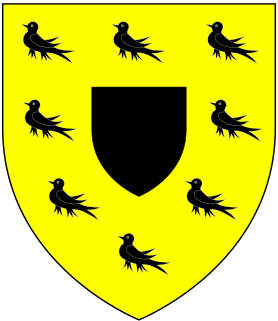
Viscount Tyrconnel was a title in the Peerage of Ireland. It was created in 1718 for Sir John Brownlow, 5th Baronet, Member of Parliament for Grantham and Lincolnshire. He was made Baron Charleville, in the County of Cork, at the same time, also in the Peerage of Ireland. The Brownlow Baronetcy, of Humby in the County of Lincoln, was created in the Baronetage of England on 27 July 1641 for William Brownlow. His grandson, the third Baronet, represented Grantham in Parliament. The latter had no surviving male issue and was succeeded by his younger brother, the fourth Baronet. He sat as Member of Parliament for Peterborough and Bishop's Castle. He was succeeded by his son, the aforementioned fifth Baronet, who was elevated to the Peerage of Ireland as Viscount Tyrconnel. The three titles became extinct on Lord Tyrconnel's death in 1754. The Brownlow estates were passed on to the late Viscount's nephew, Sir John Cust, 3rd Baronet, whose son was created Baron Brownlow in 1776.

There have been three baronetcies created for people with the surname Hood, one in the Baronetage of Great Britain and two in the Baronetage of the United Kingdom. The first Baronet of the first creation was made Viscount Hood, while the fourth Baronet of the second creation was made Baron St Audries.
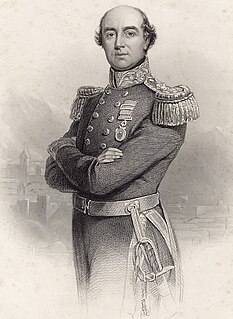
There have been twenty baronetcies created for persons with the surname Williams, eight in the Baronetage of England, three in the Baronetage of Great Britain and nine in the Baronetage of the United Kingdom. Only five of the creations are extant as of 2017..
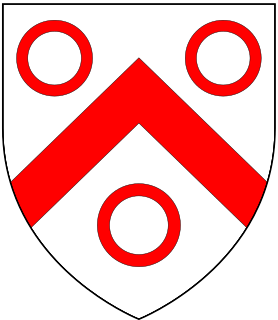
There have been two baronetcies created for persons with the surname Goring, both in the Baronetage of England. The second creation came into the family through a special remainder in the patent creating the baronetcy. Only the latter creation is extant as of 2008.
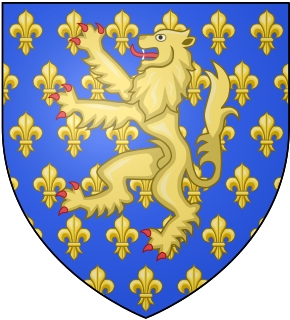
There have been four baronetcies created for members of the ancient House of Beaumont, all in the Baronetage of England. All four creations are extinct or dormant.
There have been two baronetcies created for persons with the surname Yelverton, both in the Baronetage of England.
There have been two Cook Baronetcies. This first was created in the Baronetage of England in 1663 and went extinct in 1708. The second was created in the Baronetage of the United Kingdom in the 19th century and is extant.

There have been seven baronetcies created for persons with the surname Herbert, three in the Baronetage of England, one in the Baronetage of Ireland and three in the Baronetage of the United Kingdom. All creations are extinct.
Maurice Berkeley, 3rd Viscount Fitzhardinge, known as Sir Maurice Berkeley, Bt from 1660 to 1668, was an English politician, of the Bruton branch of the Berkeley family.
John Berkeley, 4th Viscount Fitzhardinge of Bruton, Somerset was an English courtier, treasury official, army officer and politician who sat in the English and British House of Commons from 1690 to 1710.